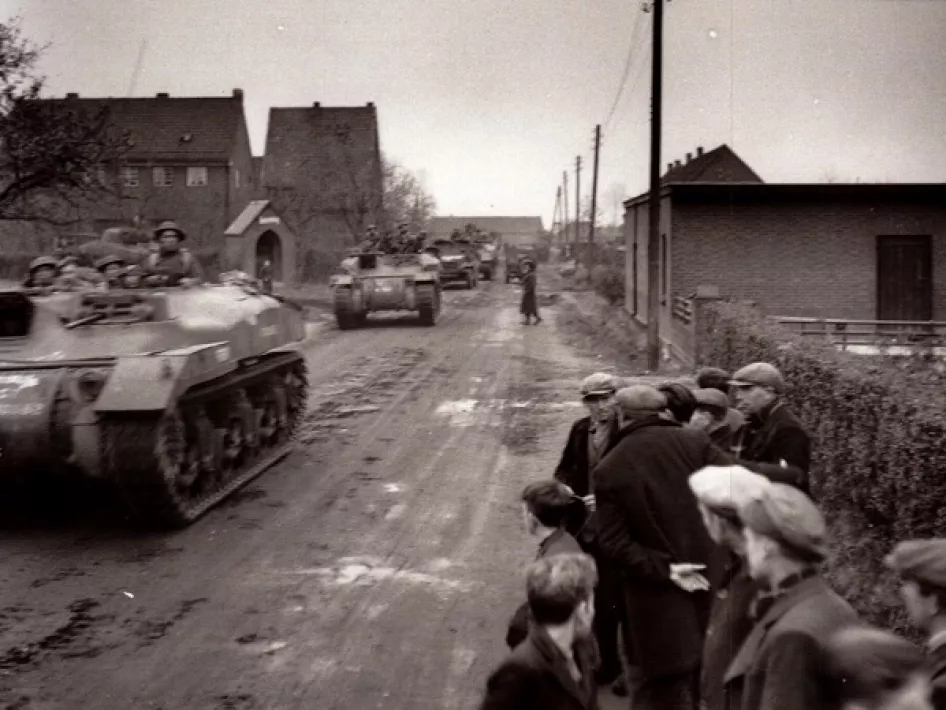Leveroy in the frontline
Since late September 1944, Leveroy had been within range of Allied artillery positioned on the south-west side of the Wessem-Nederweert canal. The canal was also the front line and it remained unchanged for almost two months. Until liberation on 15 November 1944, the Germans made the village unsafe. During the infamous church raid on Sunday 8 October, for instance, they rounded up 18 men and boys who were deported to Germany. There they had to perform forced labour in appalling conditions.
The long-awaited counterattack
In the afternoon of Tuesday 14 November, the British opened the long-awaited attack with heavy artillery shelling from the canal. For an hour and a half, some 1,500 shells were fired every minute. Before finally evacuating the village, a Sprengkommando blew up the church. Nothing remained of it. Not much later, the vanguard of the Scottish 5th Battalion Black Watch regiment rode into Leveroy. East of the village they moved into new positions to advance further towards Heythuysen the next day.
Operation Mallard & Operation Nutcracker
The crossing of the canal was part of the larger Operation Mallard which, combined with Operation Nutcracker, aimed to drive the Germans from their bridgehead on the western bank of the Meuse in northern and central Limburg.

